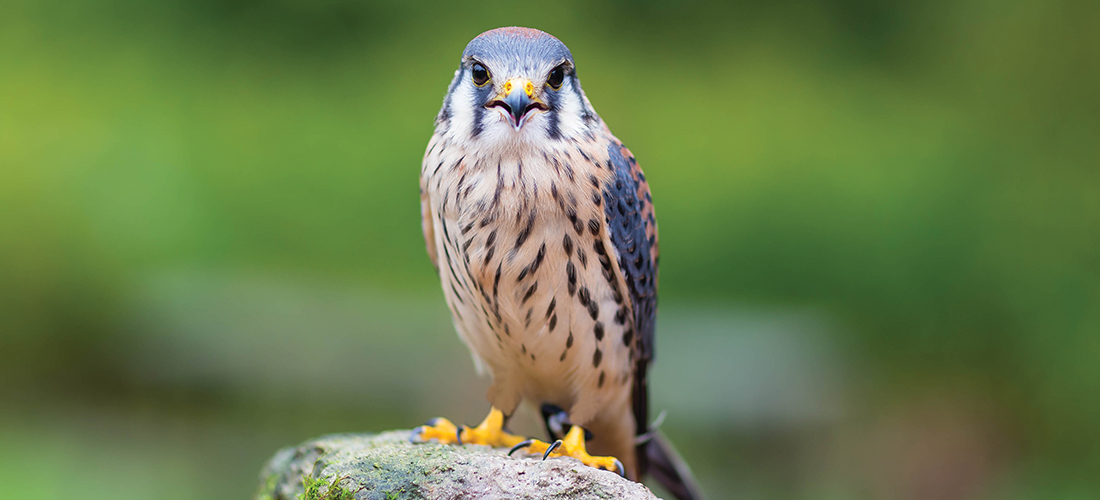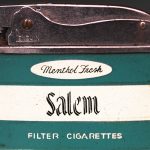
Flying High and Fast
Listen for the “killy, killy, killy” of the American Kestrel this fall
By Susan Campbell
If you happen to see, high up on an electric wire, a brightly colored, sleek raptor surveying its territory, it just might be an American kestrel.
It’s not uncommon to spot kestrels in either the Piedmont or Sandhills year round. Southern populations are not migratory, so pairs remain in the same area throughout their lifetime. In fall, numbers swell as northern individuals arrive for the winter months. The smallest members of the falcon family, these handsome predators have an affinity for open habitat. Also known as “sparrow hawks,” they are fast, maneuverable fliers, quick to dive after prey. But you’ll also see them hovering. Although kestrels are easiest to spot in large, grassy fields, they can also be found in wooded areas. They feed on a variety of prey: from grasshoppers to small snakes and songbirds. These fast-flying falcons are easy to recognize given their distinctive head pattern and bright plumage. Also listen for their distinctive call, a repeated sharp “killy, killy, killy.”
American kestrels are unique among the hawks found here in that the male and female are quite different in appearance. Both sexes have a dark, helmeted head and a handsome mustache. Males have slate-gray wings that contrast with the rufous upper parts. Females, on the other hand, which are larger than males, are more of a solid red-brown with black wingtips. The sexes also have distinct habits when it comes to defending territory. Males are typically excluded by females from more open areas, which means you can find them in brushier habitat featuring smaller but more abundant prey. Like most hawks, kestrels are monogamous.
The American kestrel can be found across most of the United States in the right habitat. Birds that breed in Canada and the Upper Midwest are migratory. Northern individuals may move as far south as southern Central America for the winter. Declines in kestrels in the middle of the last century are blamed on the use of DDT. However, as pesticide use changed and nest boxes were added to the landscape in many areas, the species rebounded well and now is a common sight along roadways and the borders of agricultural areas across its range.
American kestrels use open woodlands for breeding. In the Sandhills the open pine savannahs found on Ft. Bragg and the area’s game lands are ideal habitat to look for kestrels from March through July. These birds are also unique among area hawks in using cavities for nesting. They take over holes created by other animals, usually pileated woodpeckers, in early spring. Although they will switch locations from year to year, they may re-use the same cavity within the season. Often kestrels will raise two broods in years when rodents are plentiful. The nest hole needs to be large and deep enough to protect as many as four or five young for about a month until fledging.
Given their handsome appearance and small size, kestrels are popular among falconers. With proper permits, juveniles can be tamed and trained to hunt. Believe it or not, the ancient sport of falconry is alive and well across the United States — even here in North Carolina. But that will have to be a story for another time. PS
Susan would love to receive your wildlife sightings and photos.She can be contacted by email at susan@ncaves.com





